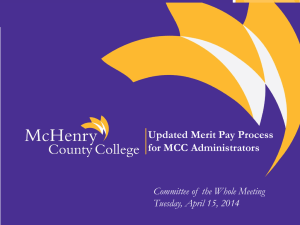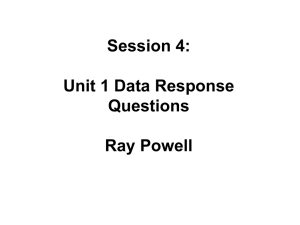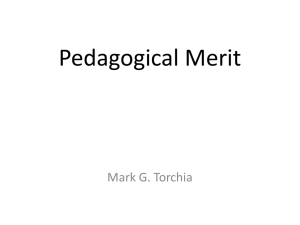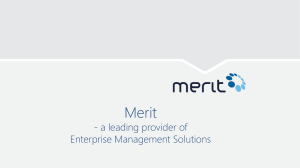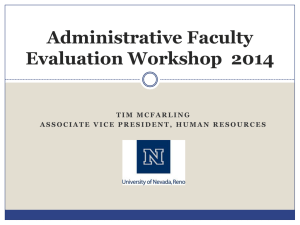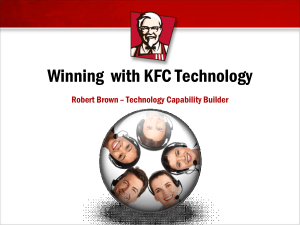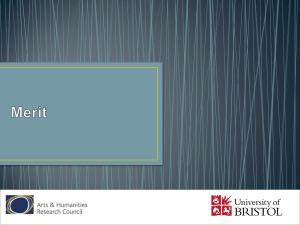The Road to Merit Pay
advertisement
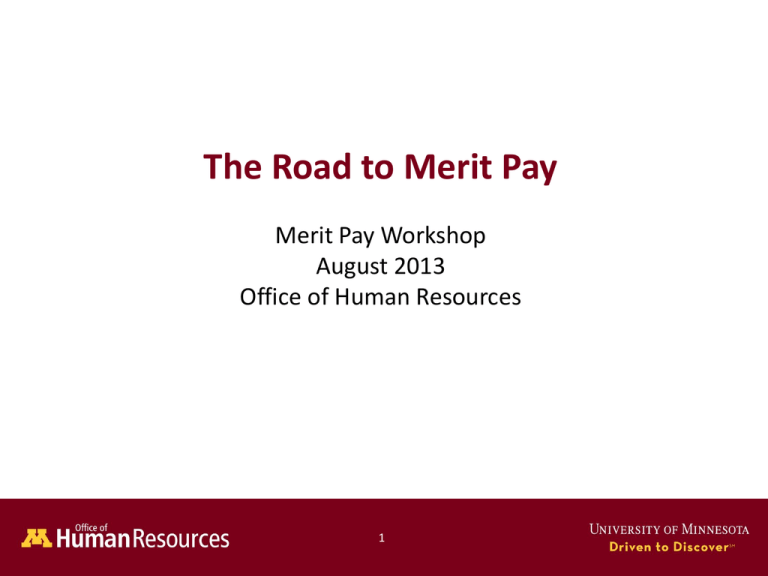
The Road to Merit Pay Merit Pay Workshop August 2013 Office of Human Resources 1 1 Agenda • Introductions • Housekeeping • Training Outcomes • Compensation and Merit Principles • Timeline • Preparing Your College/Department to Deliver Merit Pay • Designing Your Merit Pay Plan • Implementing Your Merit Pay Plan • Learning from Your Peers 2 Introductions • Housekeeping • What do you hope to learn today? 3 Merit Pay Definitions • Merit Pay—Pay that is wholly or partially dependent on performance. • Merit Pay Increases—Pay increases or lump sum payments in lieu of pay increases that are wholly or partially dependent on performance. 4 Compensation and Merit Principles • Aligned with Operational Excellence and Board of Regents compensation philosophy • Aligned with OHR Strategic Imperatives • Relevant to contemporary University workplace and consistent • Practical and timely • Credible and transparent 5 6 7 8 Prepare • • • • • Review Environmental Elements Assess Unit Readiness Consider Calibration Process Enlist a Design Team Determine Work Plan and Timeline 9 Prepare: Review Environment Elements Environmental supports and detractors Support Detract • Strong performance management • Emphasis on achievement • Well-defined individual performance outcomes • High trust in management • Top management support • Cultural support for differential rewards • Weak performance management program • Emphasis on longevity • Highly task-interdependent • Low trust in management • Lack of management support • Egalitarian climate 10 Prepare: Assess Unit Readiness • Merit Pay Readiness Assessment • Which questions did you think about the most and why? 11 Prepare: Consider Calibration Process • Purpose of Calibration • Ensures performance is differentiated among employees • Helps to enhance the “pay for performance” model • Ensures inter-rater reliability across assessments • Demonstrates transparency in the salary setting process 12 Prepare: Consider Calibration Process • Who calibrates? • Leadership • Cascading process • Interactive • Incorporate a model that works best for the teams and departments in your college/unit 13 Prepare: Enlist a Design Team • Dean/Department Head – Strategy, promotion, communications • Finance Manager – Model plans, resolve budget implications • Communications Manager– Develop communications strategy and materials • HR Director – Lead Design Team, deliver training, implement, monitor Support when needed • Office of Human Resources– Collaborate on design, assist with training, provide approvals, auditing 14 Prepare: Available Tools • Merit Pay Readiness Assessment • Performance Appraisal Tool • Sample Work Plan and Timeline 15 16 Design: Rationale Determine what you want to accomplish with merit pay • Increase the pay of those who perform well more than those who do not perform well • Increase internal and external pay equity • Recognize stellar performers • Attract and retain talent • Address poor performers • Motivate individuals to perform better • Focus employee and manager attention on goal and/or competency achievement 17 Design: Merit Pay Best Practices • Finalize performance ratings prior to merit increase determination • Use performance and market to identify target salary • Consider pay gaps when determining business unit merit pools • Provide tools to management such as a merit pay matrix to guide the decision-making process • Train and guide managers so that they have the ability and ensure merit adjustments are well coordinated with all elements of the unit’s total compensation strategy. 18 Design: Additional Considerations • Size and Form • Spread of increases (0-7%) • $ amount vs. % increase; lump sum components • Budget determination • Timing and alignment with compensation strategy • Review cycle • Alignment with equity increases and promotions • Eligibility: new hires, leave of absence, transfers • Delivery • Merit pool distributions (divide by college, department, etc.) • Delayed increases …performance improvement 19 Design: Model Options • Model 1: Performance Only • Model 2: Performance and Market and/or Equity Considerations 20 Design: Model 1—Performance Only • Increase determined by performance rating • This method used when: • Well-defined grade structures/targets don’t exist • Desire to reward annual performance without concern for ongoing pay differences • Pros/Cons • • • • • Ignores internal & external pay comparisons Strong performance message Simple to budget Easy to administer Straightforward to communicate 21 22 Design: Model 2— Performance and Market/Equity • Increase determined by current pay compared to desired pay given market and performance • This method used when: • Well-defined salary grade structures/pay targets exist • Desire to manage internal and external equity through merit increase • Pros/Cons • Addresses pay inequities • May seem unfair to some employees – different % increases • More complex to budget • More difficult to administer and communicate 23 24 HumanResources Office of 25 Design: Exercise • • Review the Design Implementation Checklist In groups, discuss considerations your college/administrative unit will have regarding determining the appropriate budget (i.e. Include vacancy dollars, lump sum amounts, department pools). Also discuss your thoughts regarding the appropriate percentage increase for proficient employees. 26 26 Design: Available Tools • Design Element Checklist • Sample Budget Sheet • Modeling Spreadsheets 27 28 Implementation: Roles • Dean/Department Head – Provide strategic communications; ensure overall legal and policy compliance • Supervisors/Managers – Provide detailed communications and coaching; ensure unit legal and policy compliance • HR Professional – Deliver training; provide process communications, review overall results, and ensure overall legal and policy compliance 29 Implementation: Actions Develop Implementation Process and Documents • Document processes and procedures • Create forms and supporting documents • Determine administrative responsibilities and work flow • Determine deadlines for the process • Look for ways to seek out feedback and incorporate for the future 30 Implementation: Actions Develop Communications and Training Plan • What should be communicated? • Who needs to be trained? • What concerns need to be addressed? • What is the best vehicle to deliver message? • What is the best timing to deliver message? 31 Implementation: Exercise • • Review the Merit Implementation Checklist In groups, discuss responsibilities, concerns, and communications coming from your constituent group? 32 Implementation: Available Tools • • • • • Implementation Checklist Merit Approval Form OHR Resource Library for Training Sample Project Plan and Timeline Audit/Review Spreadsheets and Forms 33 Learning From Your Peers Panel Discussion 34 Questions? 35




